Since being announced last month, I’ve been trying out Synology’s DS218 in my home office. The early days of Network Attached Storage (or NAS) were pretty uninspiring. I remember a Lacie hard drive in some sort of enclosure with an ethernet port and it was as slow as treacle. For the longest time, this woeful experience put me off using NAS, and I kept everything on USB drives which, though reliable, could really only be accessed by one computer at a time.
In the last few years, consumer-grade NAS has really come into its own, and it’s a somewhat crowded market now. There’s Western Digital, Seagate, Synology, to name but three, and there are others. There’s options from a couple of hundred dollars to many thousands, and it really depends what you’re looking for as to what will suit.
For probably the last two years now, I’ve had a Seagate NAS sitting in my cupboard and it’s served well. However, it had a fairly weak processor and – by comparison to Synology’s DiskStation Manager – it was feature poor. In theory, it could run a Plex Server, but it didn’t have the grunt to transcode video, making it rather useless. In reality, our Seagate NAS became little more than a plastic box with a couple of hard drives in it.
So, when I read up on what Synology could offer, of course I had to give it a try.
What is Synology’s DS218?
In a nutshell, the DS218 is a 2-bay NAS equipped with a 64-bit quad-core processor delivering sequential throughput at over 112 MB/s reading and 112 MB/s writing. It comes with 2 GB DDR4 memory, and is also optimised for 10-bit 4K H.265 video transcoding via the Video Station application.
You can use whatever size drives you like, and they don’t need to be magnetic media – if you want to splash out you can throw some SSDs in too. We’ve tested our review unit with 2 x 2TB drives, but Synology claims up to 16TB drives will work just as well (though of course they’re quite a bit more expensive).
Amongst its features, Synology lists:
- Web-based File Station for drag and drop file management.
- Network file access using FTP, AFP, NFS, SMB and WebDav to work with any environment.
- Cloud Station for network backups and sync
- QuickConnect to access your NAS across the Internet without needing to configure any special rules
- Built-in 4K Multimedia Server for streaming video content across your network and over the internet. It can transcode 4K H265 video in real-time.
Let’s unpack some of this.
What’s it good at?
A NAS is nothing if you can’t readily — and easily — manage the files stored on it. Of course, many uses of NAS will simply involve mounting the storage on your desktop or laptop via a sharing protocol, e.g. SMB for Windows machines, AFP for Macs, and various other protocols for other systems or applications. However, these do not always present the easiest methods for managing a NAS and its contents. I quite often find that a web-based management interface is very helpful, and the DS218 File Station application is the ducks nuts.
Moving files between shares, between internal and external drives, running backups, you name it – File Station makes this a breeze. In fact, I was able to move the contents of my 1TB external drive to the 2TB internal RAID drives using the web-based file manager, and the task ran in the background and only took about half an hour. It gave me a very accurate estimate of the time remaining (which Seagate’s platform didn’t), and ran in the background allowing me to do other things — like continuing to set up the NAS for our use.
SMB and AFP are what most people will use to access their NAS contents on a daily basis and our place is no different, except that I don’t use Windows or Mac. Fortunately, ChromeOS can mount SMB shares quite easily and while this is fine for moving things around, it’s not so great for moving large files between the NAS and the desktop (or vice versa). That’s Chrome’s fault though. The actual throughput from Synology’s NAS is stupidly fast, and testing with other platforms (e.g. the Mac server in the cupboard) showed how quick it was.
If you’re minded, you can use other protocols like WebDav or FTP (or SFTP) to access your drive from other platforms, on your home network or across the internet .. but why would you bother? You can install Synology’s DS File app on any Android device and access your home files from anywhere. There’s no need to set up clunky firewall rules or opening ports on your router. It just works.
Using other services, you can automatically back up your mobile content to the DS218 (again, locally or across the internet from anywhere around the world), back up content from your laptops or desktops, and access that content from wherever you need to.
This works so well that you can — in the same seamless fashion — access your media from anywhere too, provided you’ve got a decent internet connection, of course. Yes, Plex lets you do this as well, but invariably you’ll need to do a bit of setup to make this work. Synology simply requires you to install the app, plug in your NAS name, username and password, and bam. It works.
What else can it do?
Amongst other things, the DS218 can also do these kinds of things:
- It has a built in torrent client, for downloading those Linux ISOs *ahem*
- You can connect your IP cameras to it, and it’ll run as a surveillance station
- If you’ve got music stored on it, DS218 can act as an iTunes server for your iPhone using friends
- It can back-up your photos and arrange them into albums without using any cloud services
- It can run a variety of network services for (mostly) small business users, such as:
- DNS
- Directory Services
- Mail server
- Calendar server
- Contacts server
- Proxy server
- Web server

The best bit is that these services aren’t all installed – and taking up space – by default. You can pick and choose what you need, and install just those components you’ll actually use.
In fact, for a small business environment, the DS218 could easily replace a significantly more expensive server, and it’s significantly easier to configure, too. That said, for the office environment where performance might be a bit more important, I’d look at a higher-end device. As capable as the DS218 is, it really is more a consumer device than a business-grade tool.
What’s it less good at?
As someone who has used Plex extensively for a few years, I’ve grown rather used to it and wanted to install that on the DS218. Unfortunately, while Synology’s platform can run Plex, it’s only available on some hardware and the DS218 isn’t compatible. This means to continue using Plex, I have to run Plex itself on a different server, simply using the DS218 for media storage. Not ideal.
Of course, you can use Synology’s Video Station which is built into the DS218. It offers the same promise – point it at your media, it’ll obtain metadata from the Internet, and you can play it back on just about anything. There’s clients available for Android, iOS, Windows and Mac, and you can Chromecast it as well. There’s even an app for Android TV, so — in theory — you can pretty much use it exactly like Plex, with transcoding, all on the one device.
So far, this doesn’t really belong in the “what’s it less good at” section, because this works really rather well. My only real complaint with it is that the metadata discovery service is rather hit and miss. Unlike Plex which seems to match everything correctly the first time, Video Station kind of .. didn’t .. and required a fair amount of manual matching which wasn’t especially fast.
Granted, I haven’t always used the most indicative folder names for the DVDs we’ve backed up, but Plex matched things first time. Video Station sometimes needed a little help. Once it was set up, though, it worked well and – despite the relatively economical processor – transcoding was high quality, and most importantly, quick.
There really isn’t anything “less good” about the DS218. Except for this, I’d say it’s a pleasant experience all around.
Would I buy one?
The asking price for the Synology DS218 is $449, and as much as the platform offers it’s important to remember something; this is the price for the NAS device itself. It does not come with hard drives. You’ll need to find and install those yourselves. Fortunately, hard drives are both rather affordable and easily installed (it’s just a couple of clicks and a shove and they’re in), but it does mean there’s an extra cost to get started.
A couple of cheap 2TB drives will set you back about $180 give or take, but you can get larger or smaller drives, and spend more if you want a bit more reliability. That said, you mightn’t be too concerned about buying more expensive drives as – by default – the DS218 runs in a RAID configuration that stores data across both drives. This means that, should one fail, your data will remain intact. Simply take out the dead drive, drop in a new one, and your data will mirror across giving you back that level of redundancy.
Of course, if it’s mission critical data we’re talking about, then you’d probably prefer to go for a 4-bay unit as you can use more drives to give you more storage and more redundancy. For home use, a 2-bay device like the DS218 is just fine.
Really the only thing that counts against the DS218 is the opening cost – at $630 (with a couple of drives) it isn’t especially cheap, when competitors are offering 4TB models (with drives included) for a couple of hundred dollars less. What you get, though, is a significantly more useful platform that can replace not only your storage needs but also a home media server … and those can be very expensive.
Would I buy the DS218? Definitely. It meets our current needs and offers plenty of room to do more in future.
Disclosure Statement
Synology has allowed Ausdroid to retain the DS218 for our storage needs.

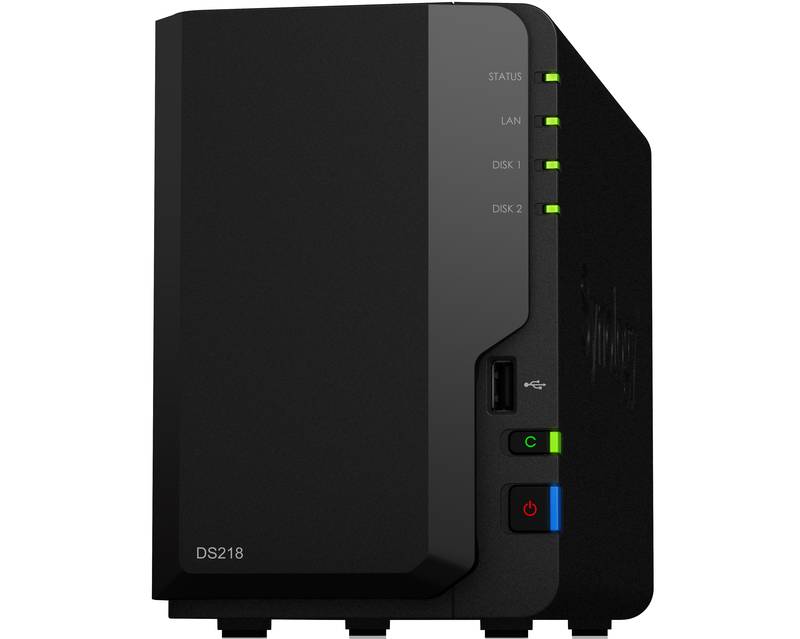
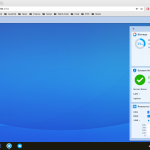
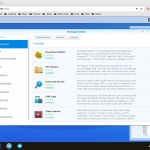
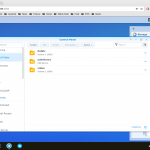





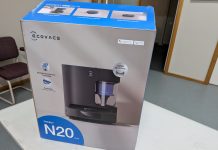
Ability to transcode video, but it won’t run Plex which is the main reason most people need to transcode video? Well that’s a bit of a dealbreaker. Shame, as I love my Ds215j but am frustrated by its inability to transcode (which Plex requires more than any other video streamer for some reason).
It can’t transcode on Plex, but the DS Video streamer seems to allow it to. The RS818 – which we’re about to publish the review of – can run Plex and transcode just fine. Depends on the model (and ultimately, the processor inside) as to whether Plex and transcoding is supported or not.
Interesting review. Time I got serious with some reliable storage, and probably time to mess with a media server. Never bothered with that before because I don’t watch much stuff. But music, time to organise that. Last time I looked, flacs were the thing (?), will have to read up.
Haven’t seen too many at $449, but not a biggie.
My long term use confirms these are great value. What price peace of mind & ease of use? The lower end j series single drive units are very inexpensive with same quality & almost same capabilities of higher models.
The only reason I’d avoid a single drive model is I want that redundancy.. if a drive fails, I want to be able to grab a new one, plug it in, and have the data mirror across so I don’t lose anything. But otherwise yes, some of the cheaper models are very capable.
Great review. It sounds like Synology are onto something here with the DS218, but I am curious to see what you’d recommend for a SMB.. would the DS218 be enough? Or would you recommend something a bit higher end?
Nice review! Always good to see non-phone related articles. As an *appliance*, nothing comes close to Synology (and more expensive QNAP) in terms of value and ease of use. However, once you go above 4 HDD bays, Synology becomes very expensive. People handy with PC’s should try FreeNAS. I have a cheap HP Microserver N40L and 5 HDDs. Equivalent Synology would cost ~$700 More. Plex runs beautifully on FreeNAS. There are many more handy plugins available, like SickRage, Couch Potato, MineOS, Transmission (to manage Linux ISO downloads), Crashplan….too many to list. You can also configure multiple VMs and run OS… Read more »